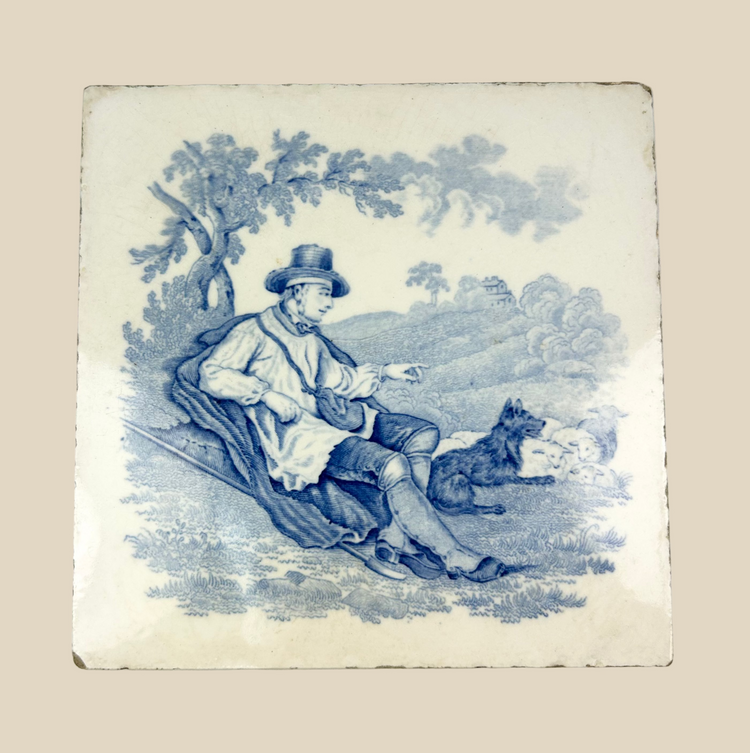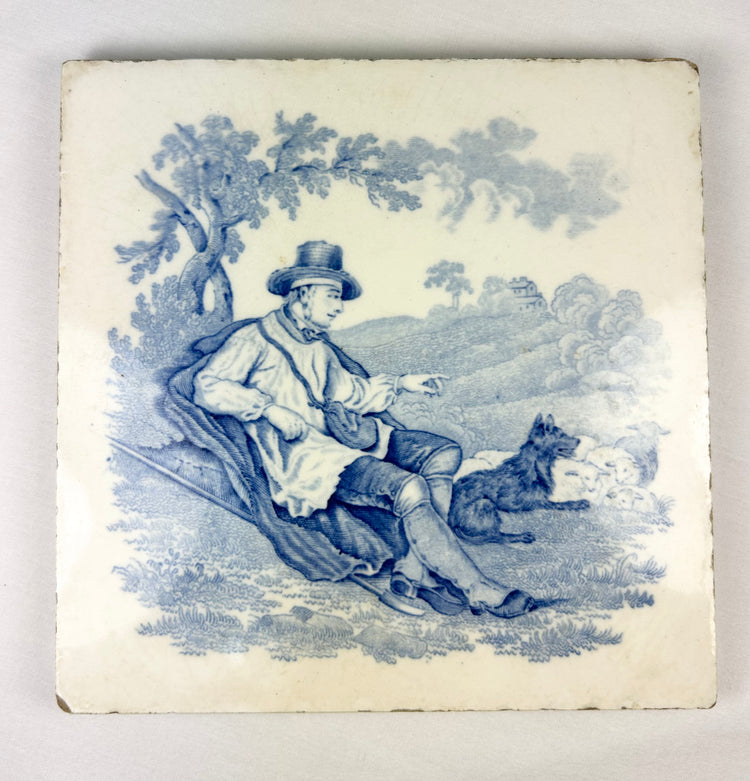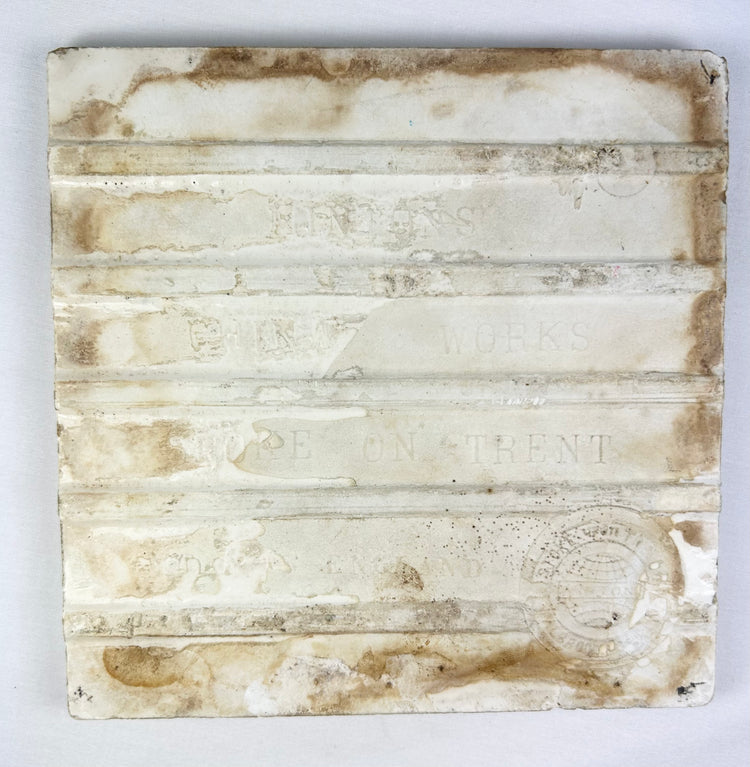Antique Transferware Tile | Seated Figure with Sheep | 19th Century England
Description
More
Less
Historical Context & Origin
Region: England (Staffordshire, likely Stoke-on-Trent)
Material: Glazed earthenware ceramic tile, transfer-printed in cobalt blue
Period: Late 19th Century (circa 1870–1890)
Description
This decorative ceramic tile, attributed to the renowned Staffordshire maker Minton, exemplifies the Victorian fascination with pastoral imagery in domestic design. Transfer-printed in cobalt blue, it depicts a seated shepherd beneath a stylized tree with grazing sheep at his side, evoking an idealized rural idyll. The reverse retains raised ridges and impressed factory markings typical of Minton’s late 19th-century production, confirming its origin. Likely intended for use in fireplace surrounds or wall decoration, the tile reflects both artistic refinement and the functional craftsmanship of England’s leading ceramic workshops.
Features
- Transfer-printed pastoral motif in cobalt blue glaze
- Central figure of a seated shepherd with sheep beneath a tree
- Reverse with characteristic ridged back and impressed Minton factory mark
- Produced for fireplace surrounds or wall decoration
- Strong example of Victorian ceramic artistry
Cultural Significance
During the Victorian era, decorative tiles became increasingly popular as affordable luxuries that brought artistry into the home. Minton, among the foremost Staffordshire producers, was celebrated for balancing utility with aesthetic appeal. Pastoral motifs such as this embodied a nostalgic longing for agrarian simplicity amid rapid industrialization, making them particularly resonant in middle-class domestic interiors. Today, they remain sought-after both as decorative antiques and as cultural emblems of Victorian taste.
Condition
Good antique condition. Minor surface wear, glaze crazing, and light discoloration to edges. Reverse with ridged back, impressed factory stamp, and traces of mortar from past installation.
Dimensions (approximate)
Height: 6 in
Width: 6 in
Age
Late 19th Century (circa 1870–1890)
Description
Historical Context & Origin
Region: England (Staffordshire, likely Stoke-on-Trent)
Material: Glazed earthenware ceramic tile, transfer-printed in cobalt blue
Period: Late 19th Century (circa 1870–1890)
Description
This decorative ceramic tile, attributed to the renowned Staffordshire maker Minton, exemplifies the Victorian fascination with pastoral imagery in domestic design. Transfer-printed in cobalt blue, it depicts a seated shepherd beneath a stylized tree with grazing sheep at his side, evoking an idealized rural idyll. The reverse retains raised ridges and impressed factory markings typical of Minton’s late 19th-century production, confirming its origin. Likely intended for use in fireplace surrounds or wall decoration, the tile reflects both artistic refinement and the functional craftsmanship of England’s leading ceramic workshops.
Features
- Transfer-printed pastoral motif in cobalt blue glaze
- Central figure of a seated shepherd with sheep beneath a tree
- Reverse with characteristic ridged back and impressed Minton factory mark
- Produced for fireplace surrounds or wall decoration
- Strong example of Victorian ceramic artistry
Cultural Significance
During the Victorian era, decorative tiles became increasingly popular as affordable luxuries that brought artistry into the home. Minton, among the foremost Staffordshire producers, was celebrated for balancing utility with aesthetic appeal. Pastoral motifs such as this embodied a nostalgic longing for agrarian simplicity amid rapid industrialization, making them particularly resonant in middle-class domestic interiors. Today, they remain sought-after both as decorative antiques and as cultural emblems of Victorian taste.
Condition
Good antique condition. Minor surface wear, glaze crazing, and light discoloration to edges. Reverse with ridged back, impressed factory stamp, and traces of mortar from past installation.
Dimensions (approximate)
Height: 6 in
Width: 6 in
Age
Late 19th Century (circa 1870–1890)
You May Also Like














